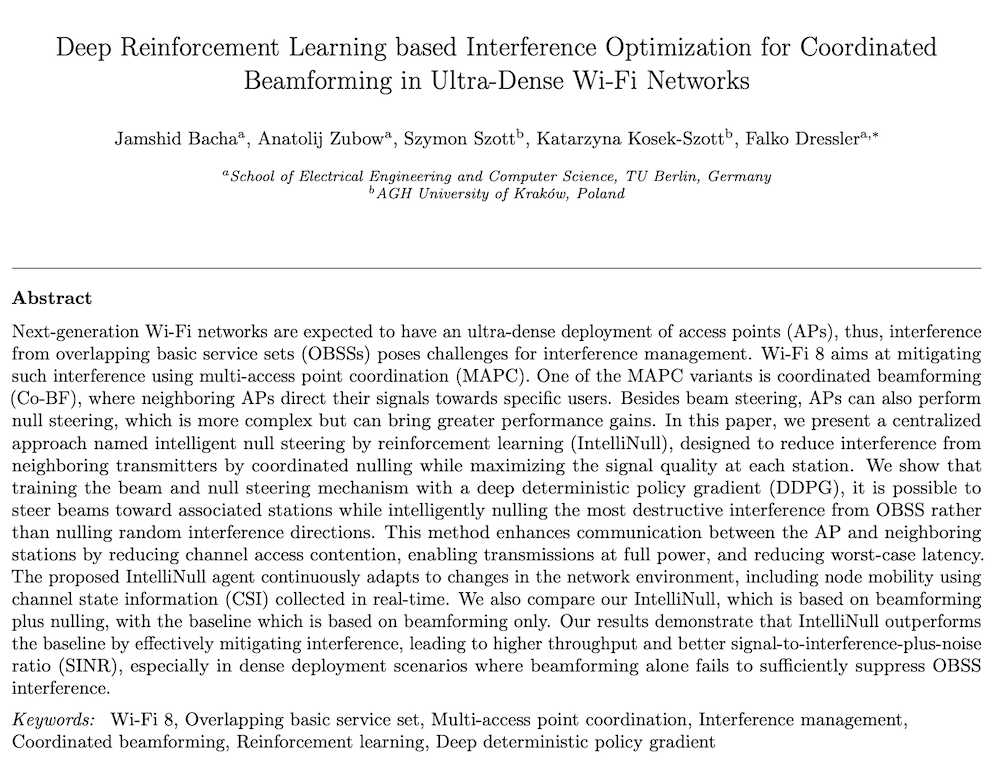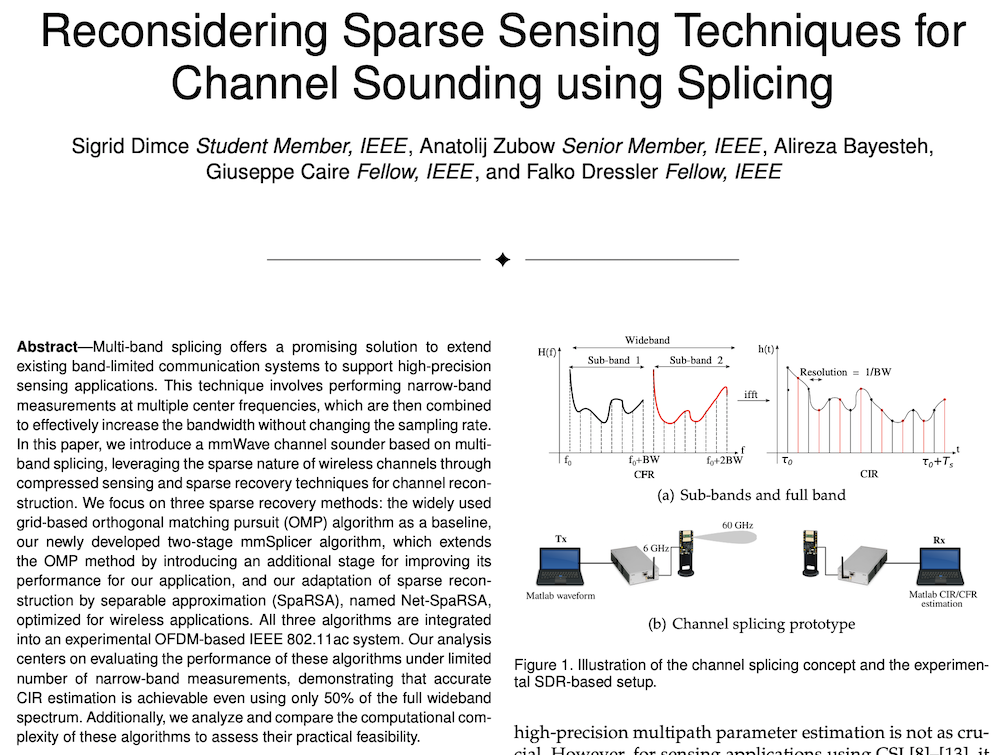Literature Database Entry
mauren2021simulation
Alexander Mauren, "Simulation of a Hybrid Sensor Network," Bachelor Thesis, School of Electrical Engineering and Computer Science (EECS), TU Berlin (TUB), September 2021. (Advisors: Johannes Blobel and Andreas Fischer; Referees: Falko Dressler and Thomas Sikora)
Abstract
In a hybrid sensor network the data transfer is carried out by at least two different connecting technolgies. For the network to be simulated, these will be CAN FD (wired) and IEEE 802.15.4 (wireless). Through the continous improvement of wireless technologies they become more diverse in their characteristics and applications. The IEEE 802.15.4 standard offers a great flexibility when it comes to topologies and self-organsation. The low power consumption also fits into the requirement profile very well, even though it is payed with a comparetively low data rate. CAN FD, however, has a fixed line topology but offers a higher data rate compared to IEEE 802.15.4 (5 Mbit vs. 250 kbit) and does not include any routing algorithms by default since all devices feed the same line (in a single line application). Now, the question arises when it does make sense to combine these to technologies? In the given environment is an office building, where wireless traffic within the 2.4 GHz band is supposed to be limited to Wireless Local Area Network (WLAN) in order to avoid any mutual interferences. Another issue: very thick walls which could cause weak signals in case the radio power can not be increased. So for the inside of the building CAN FD is the more suitable solution, especially if the corresponding cables are already installed. The sensor network must also capture data outiside of the building (garden, fence e.g). For that, the used sensor boards shall be movable which clearly speaks for wireless solution / IEEE 802.15.4. The thesis aims to reveal limits of the CAN FD / IEEE 802.15.4 combination, such as network size and latencies bound to a certain topologie with software simulations. For the simulation of such a network, the software Objective Modular Network Test bed in C++ (OMNeT++) is used in combination with appropriate simulation models for each technology. The results should reveal occuring bottlenecks and serve as a basis for a hardware implementation.
Quick access
Contact
Alexander Mauren
BibTeX reference
@phdthesis{mauren2021simulation,
author = {Mauren, Alexander},
title = {{Simulation of a Hybrid Sensor Network}},
advisor = {Blobel, Johannes and Fischer, Andreas},
institution = {School of Electrical Engineering and Computer Science (EECS)},
location = {Berlin, Germany},
month = {9},
referee = {Dressler, Falko and Sikora, Thomas},
school = {TU Berlin (TUB)},
type = {Bachelor Thesis},
year = {2021},
}
Copyright notice
Links to final or draft versions of papers are presented here to ensure timely dissemination of scholarly and technical work. Copyright and all rights therein are retained by authors or by other copyright holders. All persons copying this information are expected to adhere to the terms and constraints invoked by each author's copyright. In most cases, these works may not be reposted or distributed for commercial purposes without the explicit permission of the copyright holder.
The following applies to all papers listed above that have IEEE copyrights: Personal use of this material is permitted. However, permission to reprint/republish this material for advertising or promotional purposes or for creating new collective works for resale or redistribution to servers or lists, or to reuse any copyrighted component of this work in other works must be obtained from the IEEE.
The following applies to all papers listed above that are in submission to IEEE conference/workshop proceedings or journals: This work has been submitted to the IEEE for possible publication. Copyright may be transferred without notice, after which this version may no longer be accessible.
The following applies to all papers listed above that have ACM copyrights: ACM COPYRIGHT NOTICE. Permission to make digital or hard copies of part or all of this work for personal or classroom use is granted without fee provided that copies are not made or distributed for profit or commercial advantage and that copies bear this notice and the full citation on the first page. Copyrights for components of this work owned by others than ACM must be honored. Abstracting with credit is permitted. To copy otherwise, to republish, to post on servers, or to redistribute to lists, requires prior specific permission and/or a fee. Request permissions from Publications Dept., ACM, Inc., fax +1 (212) 869-0481, or permissions@acm.org.
The following applies to all SpringerLink papers listed above that have Springer Science+Business Media copyrights: The original publication is available at www.springerlink.com.
This page was automatically generated using BibDB and bib2web.





